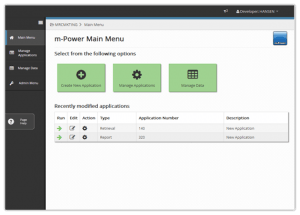7 principles of modern web development
 What makes a “productive developer?”
What makes a “productive developer?”
That question came up in a recent article, and I think it’s worth exploring. Generally speaking, productivity correlates directly with speed. With developers, however, it’s different. Speed doesn’t necessarily equal productivity.

For instance, suppose a developer completes a project in half the time expected. Is that developer productive? It depends. Does the application meet the specs? Is it usable? Is it secure? Will it scale up with the company? Will it adapt to future needs? I could go on.
As you see, the term “productive developer” isn’t clear cut. A “fast” developer that creates complex, unmaintainable applications isn’t productive. Quite the opposite, in fact. I’d argue that a “productive developer” is one who builds applications the right way, in the most efficient manner possible. In other words, productivity = speed + quality.
The next logical question: What makes a “quality” application? Is it one that delivers on the specifications? I believe it goes far beyond that. A quality application is one that’s built for both the present and the future. It adapts to changing technology, solves the user’s long-term needs, grows with the business, and is easily maintainable.
So, how can developers build quality applications? It starts with an understanding of modern web development principles. These principles will help developers create successful applications–those that meet their user’s present and future needs, and adapt to the ever-changing tech trends. While this isn’t a comprehensive list by any means, here are 7 important principles of modern web application development:
…

 On our 2013 survey, we asked this question: “What problems keep you from accomplishing your goals?” In other words, what stops your company from addressing all of those pressing needs on your to-do list?
On our 2013 survey, we asked this question: “What problems keep you from accomplishing your goals?” In other words, what stops your company from addressing all of those pressing needs on your to-do list?
 If you’re looking for a way to improve your application development speed, create mobile web apps, or just build enterprise web applications without programming, you should really check out the all new m-Power Trial. It’s recently been revamped with the
If you’re looking for a way to improve your application development speed, create mobile web apps, or just build enterprise web applications without programming, you should really check out the all new m-Power Trial. It’s recently been revamped with the 
